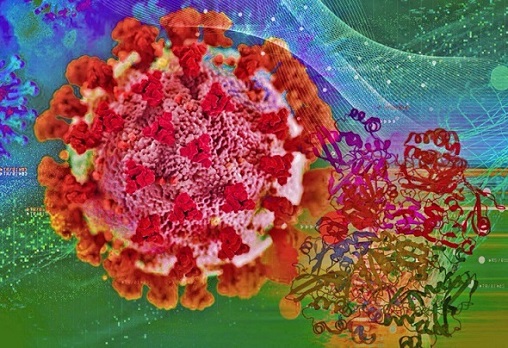Researchers Discover Mutation in SARS-CoV-2 Nsp15 Protein That Enhances Its Ability to Evade Immunity
Nikhil Prasad Fact checked by:Thailand Medical News Team May 26, 2025 6 months, 4 days, 19 hours, 11 minutes ago
Medical News: Scientists from Arizona State University’s Biodesign Institute and School of Molecular Sciences, along with collaborators from the European Molecular Biology Laboratory (EMBL) and the European Synchrotron Radiation Facility (ESRF) in France, have made an important discovery in the battle to understand COVID-19. A team led by Petra Fromme has uncovered how a single mutation in a viral protein, known as Nsp15, could make the SARS-CoV-2 virus more dangerous by helping it better evade the human immune system.
 Researchers Discover Mutation in SARS-CoV-2 Nsp15 Protein That Enhances Its Ability to
Researchers Discover Mutation in SARS-CoV-2 Nsp15 Protein That Enhances Its Ability to
Evade Immunity
This
Medical News report dives into the details of their findings. The protein in question, Nsp15, plays a critical role in destroying pieces of the virus’s own RNA that would normally alert our immune system to an infection. By breaking down these RNA warning signs, the virus avoids being detected early by our immune defenses.
What the Scientists Found
The researchers studied a version of SARS-CoV-2 known as the Epsilon variant, first identified in California. Within this variant, they found a specific mutation in the Nsp15 protein—called E266Q—that changed the way the protein worked. This mutation altered the catalytic domain of the protein, which is the part responsible for cutting RNA.
Using advanced imaging techniques, including room-temperature X-ray crystallography, the scientists discovered that this mutation made Nsp15 not only more stable but also significantly more active. This means the virus could cut RNA more efficiently, making it even harder for the human immune system to spot the infection in time.
The study showed that the mutated version of the protein was able to withstand higher temperatures before breaking apart. This suggests that the mutated virus might survive better under the feverish conditions the body produces to fight infections.
Higher Activity and Hidden Motion
A particularly interesting part of the study revealed that the E266Q mutation increased the motion within the Nsp15 protein complex. Nsp15 naturally forms a six-part structure known as a hexamer, and this new mutation seemed to cause more flexible and uneven movement within this complex.
This flexibility may help the protein adapt better when binding to RNA, making it more effective at cutting and destroying these immune-warning signals. Importantly, these kinds of motions were previously hidden in older structural studies, but by solving the structure in a lower-symmetry crystal form, the researchers were able to spot this behavior for the first time.
Potential Impact on COVID 19 Severity and Future Research
While the E266Q mutation made Nsp15 more efficient, it also resulted in lower protein production levels in lab conditions. This could suggest a possible trade-off between activity and expression, but further research is needed to confirm how this pl
ays out inside actual human cells during infection.
The researchers believe this mutation could have helped the Epsilon variant become more infectious, although it is no longer considered a major threat compared to newer variants. Nevertheless, the discovery opens new doors for antiviral drug development, especially drugs that could block Nsp15 activity and give the immune system a better chance to detect and destroy the virus.
These findings also highlight the importance of studying not just the spike protein, but also other viral proteins like Nsp15, which play silent but powerful roles in helping the virus survive and spread.
The study findings were published in the peer-reviewed journal: Protein Science
https://onlinelibrary.wiley.com/doi/10.1002/pro.70115
For the latest COVID-19 News, keep on logging to Thailand
Medical News.
Read Also:
https://www.thailandmedical.news/news/study-finds-that-sars-cov-2-nsp15-suppresses-type-i-interferon-production-by-inhibiting-irf3-phosphorylation-and-nuclear-translocation
https://www.thailandmedical.news/news/covid-19-research-chinese-study-finds-that-sars-cov-2-nsp15-protein-suppresses-type-1-interferon-production
https://www.thailandmedical.news/news/breaking-sars-cov-2-research-new-study-by-nih-reveals-that-sars-cov-2-nsp15-s-uridine-cleavage-can-evade-the-immune-response
https://www.thailandmedical.news/articles/coronavirus
https://www.thailandmedical.news/pages/thailand_doctors_listings
